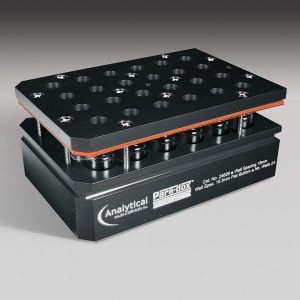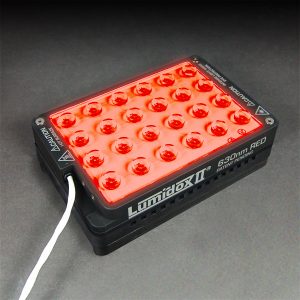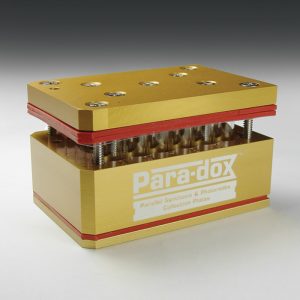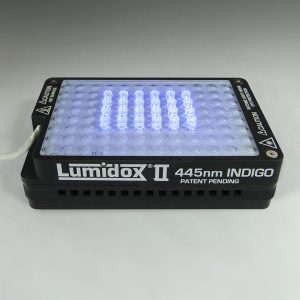Blog
24-Well Reactor Research in Biochemistry, Photochemistry, and Electrochemistry
Published: January 28, 2022As chemistry research continues, the need for increased throughput and increased parallelization is becoming more and more apparent. As a technology supporting those goals, standardized multi-well reactors have become more and more ubiquitous in the fields of biochemistry, photochemistry, and electrochemistry. As a provider of scientific instruments for over 30 years, Analytical Sales and Services is poised to help you take advantage of the efficiency gains brought about by 24 well reactor blocks, both with 9mm and 18mm well-to-well spacing. A few use cases of these reactors follow below.
 24-Well Reaction Block, 18mm Spacing |
 24-Well LED Array, 18mm Spacing |
 24-Well Reactor Block, 9mm Spacing 24-Well Reactor Block, 9mm Spacing |
 24-Well LED Array, 9mm Spacing 24-Well LED Array, 9mm Spacing |
A use for 24 Well Reactors comes from joint efforts between Merck and Cornell, (which is currently being commercialized by Analytical Sales and Services) through the development of a standardized electrochemistry system. This system will enable the development of high-speed experimentation and standardized parameters for increased replication abilities. It also allows for experiments to be performed using either constant current or constant voltage with easily removable electrodes. With 24 wells, the capabilities for parallel experimentation and heightened has reached electrifying levels of potential. (1)
Betzalel et. al. from the universities of Tel Aviv and Haifa-Oranim are researching the ability of UV-LEDs to perform water disinfection. While UV light is common in pathogen inactivation, the use of LEDs for disinfection purposes has stalled due to their inefficiency and low power. Their possible benefits in terms of wavelength control have propelled continued research into their development and research towards applications for those developing LEDs has continued with the help of 24 well, 18mm spaced plates. Their paper marks the first time that multi-well plates were used in UVB/UVC research and the increase in efficiency was significant thanks to the potential for parallel experimentation. It was observed that the 24 well plate was able to distribute the light evenly and is a good candidate for experiments requiring parallel iterations. (2)
In the identification of optimal parameters of catalysis, copper presents particular difficulties for optimization due to the holistic approach that its complex and unpredictable species necessitate. In order to effectively optimize copper catalytic systems, it is necessary to implement high-throughput methods. A paper from Steimbach et. al. from the Journal of Orgainic Chemistry covers the difficulties associated with this optimization and the ways in which multi-well reactors assist in the process. By using the 24 Well reactor blocks provided by Analytical Sales and Services, the researchers were able to achieve assay yields as high as 98%. (3)
As has been demonstrated, the possibilities of 24 Well Reactors are near endless. From oncological research to copper catalysis, 24 Well Reactors represent an unparalleled advance in parallel experimentation. With the advantage of high-throughput experimentation, processes can be fine tuned quickly and efficiently. No matter the use case, Analytical Sales and Services can be relied on as a partner in these new frontiers of chemical discovery. Our 24 Well Reactors are available for all of your experimental needs.
Sources:
